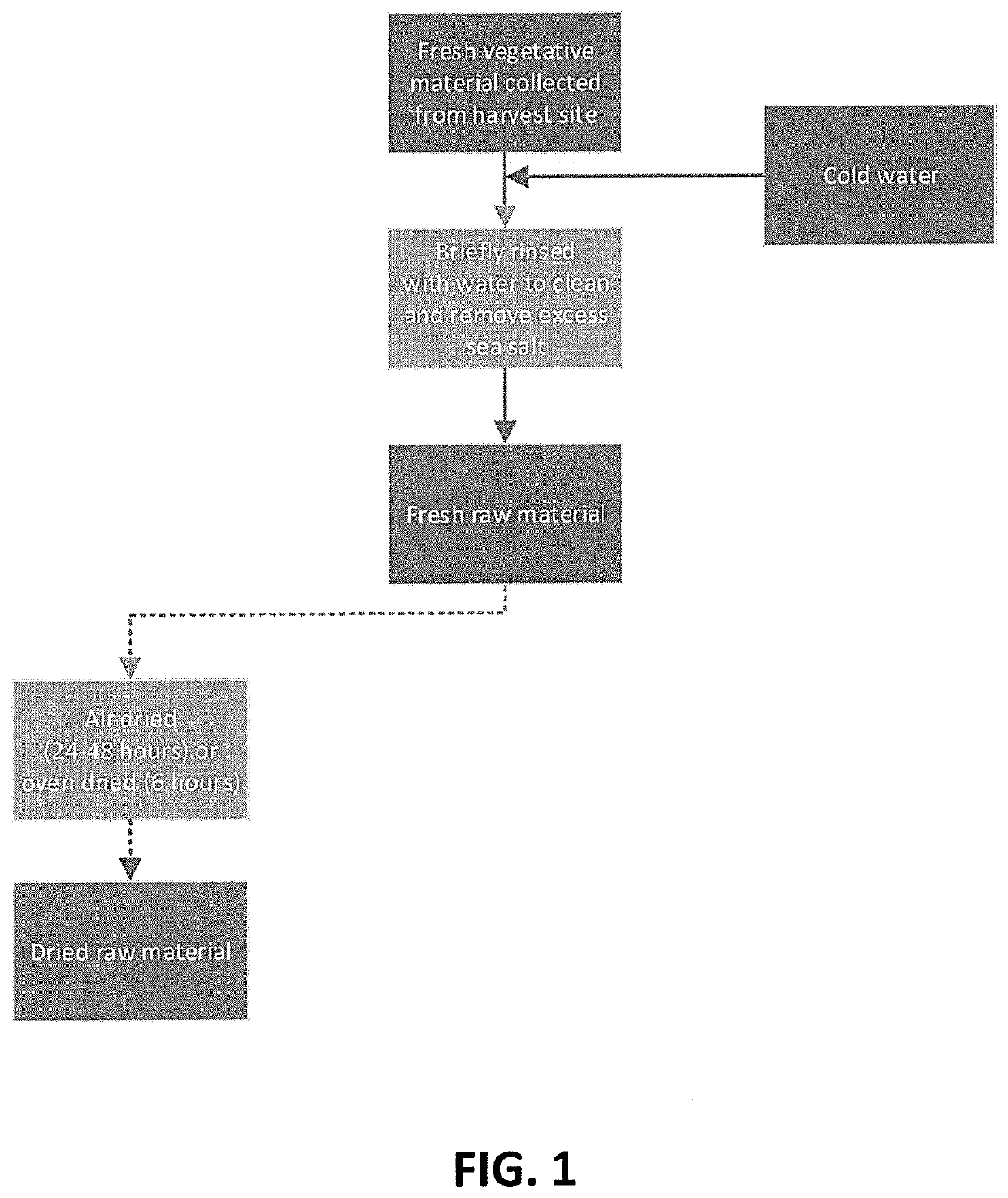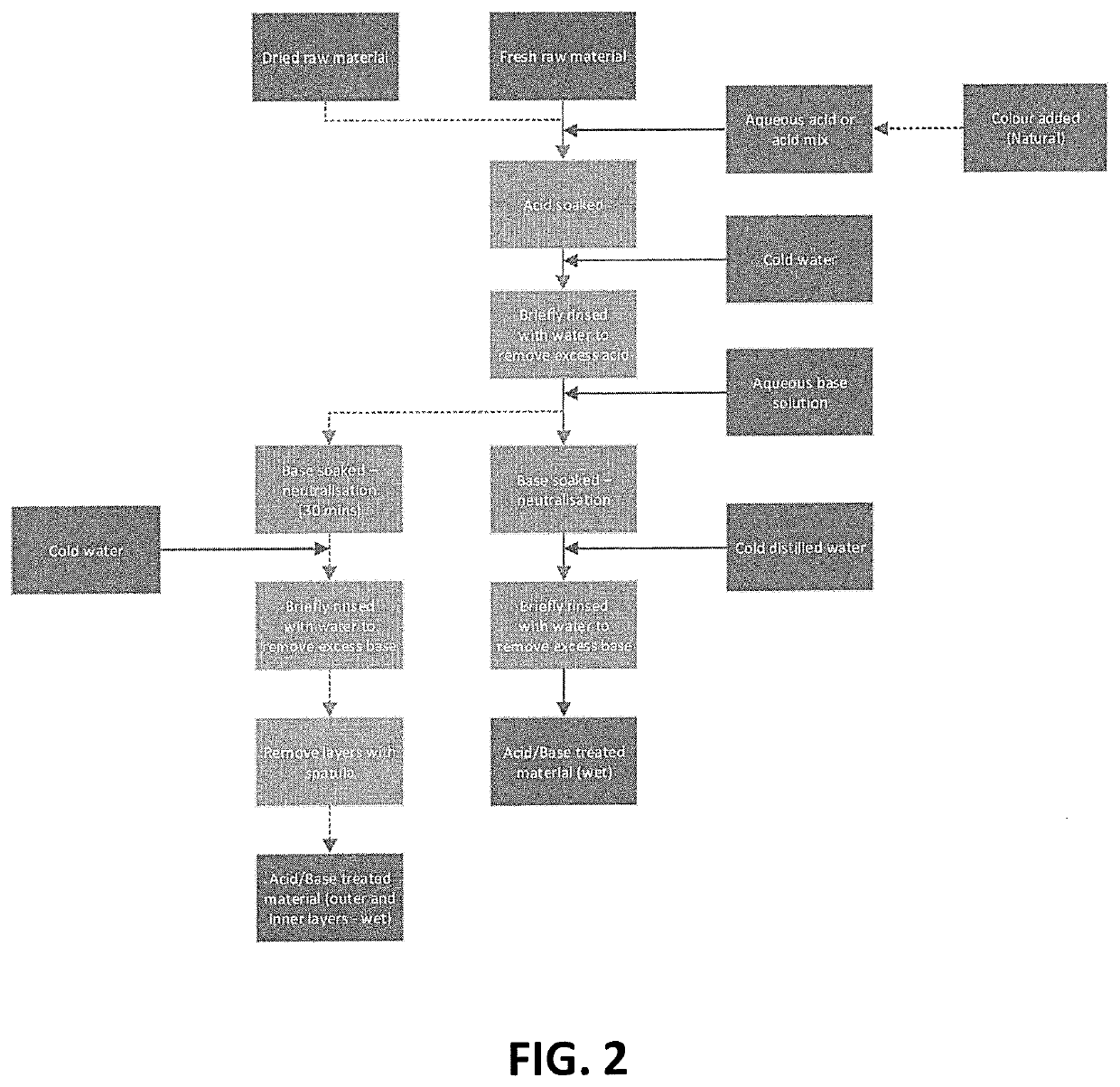Method of tissue preservation
a tissue and tissue technology, applied in the field of tissue preservation, can solve the problems of cell degradation, inhomogeneous tissue treatment, and inability to control the heating of the tissue, and achieve the effect of pliabl
- Summary
- Abstract
- Description
- Claims
- Application Information
AI Technical Summary
Benefits of technology
Problems solved by technology
Method used
Image
Examples
example 1
Concentrations / Ratios and Soak Times of Aqueous Acids, Acid Mixes, Base and Sugar Alcohol
[0210]The following examples provide numerous variations of different compositions, concentration and soak times of treatment of tissue material with acids, acid mixes, base and sugar alcohol are described and that have been performed.
example 1a
[0211]Several aqueous concentrations of ascorbic acid were made (0.25%, 0.5%, 1%, 2%, 3%, 4%, 5%, and 7%; all being v / v). Each concentration was then tested using either fresh or air / oven dried material (Laminara digitata and Saccharina lattisima), which was allowed to soak in the acid (12 hours, 24 hours, 3 days, or 7 days). Air drying was performed by vertically hanging the material at a temperature of 20-22° C. Oven drying was done at about 40° C. for 6 hours. This was followed by a brief water wash and soak in different concentrations of aqueous sodium bicarbonate solution (1%, 2%, 3%, 4%, and 5%), for no longer than 10 minutes. Another water wash was employed, before then processing the material further using either the general description, or the vacuum assisted method (see variation 3) using different concentrations of heated (60° C.) aqueous glycerol solution (25% and 50%), and applying a vacuum of −1 bar for approximately 30 minutes.
example 1b
[0212]Several aqueous concentrations of acetic acid were made (1%, 2%, 3%, 4%, 5%, and 7%). Each concentration was then tested using either fresh or air / oven dried material (L. digitata and S. lattisima), which was allowed to soak in the acid (12 hours, 24 hours, 3 days, or 7 days). This was followed by a brief water wash and soak in aqueous sodium bicarbonate solution (3%), for no longer than 10 minutes. Another water wash was employed, before then processing the material further using either the general description, or the vacuum assisted method (see variation 3) using different concentrations of heated (60° C.) aqueous glycerol solution (25% and 50%), and applying a vacuum of −1 bar for approximately 30 minutes.
PUM
| Property | Measurement | Unit |
|---|---|---|
| pKa | aaaaa | aaaaa |
| pKa | aaaaa | aaaaa |
| thickness | aaaaa | aaaaa |
Abstract
Description
Claims
Application Information
 Login to View More
Login to View More - R&D
- Intellectual Property
- Life Sciences
- Materials
- Tech Scout
- Unparalleled Data Quality
- Higher Quality Content
- 60% Fewer Hallucinations
Browse by: Latest US Patents, China's latest patents, Technical Efficacy Thesaurus, Application Domain, Technology Topic, Popular Technical Reports.
© 2025 PatSnap. All rights reserved.Legal|Privacy policy|Modern Slavery Act Transparency Statement|Sitemap|About US| Contact US: help@patsnap.com



